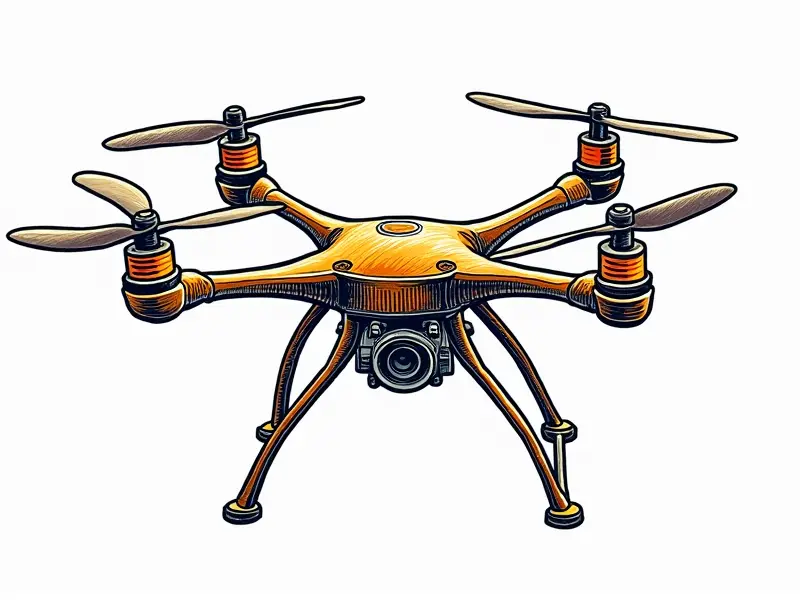Can RC quadcopters fly in rain?

Can RC Quadcopters Handle Rain?
Flying an RC quadcopter in rain can be a daunting prospect for many enthusiasts. The immediate concern is whether these devices are designed to withstand the elements, particularly water and moisture. While some models come with weather-resistant features, it's crucial to understand that most RC quadcopters are not inherently waterproof or built to handle prolonged exposure to wet conditions.
Is It Safe to Fly RC Copters in the Rain?
The safety of flying an RC quadcopter during rain depends largely on the specific model and its construction. Many hobby-grade drones lack robust weatherproofing, making them susceptible to damage from water ingress. Flying such a drone in wet conditions can lead to malfunctions, short circuits, or even permanent damage that renders the device unusable.
Flying RC Drones Safely in the Rain
If you're determined to fly your RC quadcopter during light rain, there are steps you can take to mitigate risks. Ensure your drone is equipped with proper insulation and weatherproofing materials if available. Additionally, avoid flying in heavy downpours or when visibility is compromised due to poor conditions.
Tips for Flying RC Drones in Wet Conditions
- Choose the Right Model: Opt for a drone that has some level of weather resistance.
- Cover Critical Components: Use waterproof tape or spray to protect sensitive electronics.
- Limited Flight Time: Keep flight durations short and monitor battery levels closely.
- Avoid Waterlogged Areas: Stay away from puddles, lakes, or any standing water.
Weatherproofing Your RC Quadcopter for Rain
To enhance your drone's resilience against rain, consider these weatherproofing techniques:
- Apply Silicone Spray: Use a silicone-based spray to coat the exterior and critical components.
- Wrap Critical Parts: Cover battery compartments and other vulnerable areas with waterproof tape or shrink wrap.
- Select Weather-Resistant Materials: Choose drones made from materials like polycarbonate that offer better protection against moisture.
Waterlogging and RC Quadcopters: A Guide
Waterlogging is a significant risk when flying in rain. It can cause irreversible damage to the drone's electronics, leading to malfunction or complete failure. To prevent waterlogging:
- Dry Out Components: Thoroughly dry off your drone after each flight.
- Inspect Regularly: Check for signs of moisture and address issues promptly.
Surviving Wet Flights with RC Quadcopters
Flying an RC quadcopter in wet conditions requires careful planning and execution. Here are some strategies to help you survive these challenging flights:
- Pre-Flight Checks: Conduct thorough pre-flight inspections focusing on weatherproofing.
- Post-Flight Maintenance: Clean and dry your drone immediately after each flight.
Can My Drone Fly in Light Rain?
Determining whether your specific model can handle light rain involves checking its specifications for weather resistance. Some drones are designed to withstand minor exposure, but it's essential to verify this information before attempting a wet flight.
Should You Avoid Flying RC Copters in Rain?
In most cases, avoiding flying an RC quadcopter during rainy conditions is the safest approach. The risk of damage outweighs any potential benefits, especially for hobby-grade drones lacking robust weatherproofing features.
RC Quadcopter Durability in Rainy Conditions
The durability of your RC quadcopter in rain will depend on its design and construction materials. High-end models with advanced weatherproofing may perform better under wet conditions, but even these should be used cautiously.
How Weather Affects RC Quadcopter Flight
Weather plays a crucial role in the performance of your RC quadcopter. Rain can affect flight stability and battery life, while wind can impact control and maneuverability. Understanding these factors is key to successful wet weather flying.
Conclusion
Flying an RC quadcopter during rain poses significant risks that should not be underestimated. While some models offer better resistance against moisture, it's generally safer to avoid such conditions unless your drone has robust weatherproofing features. Always prioritize the safety and longevity of your equipment by adhering to best practices for wet weather flying.

